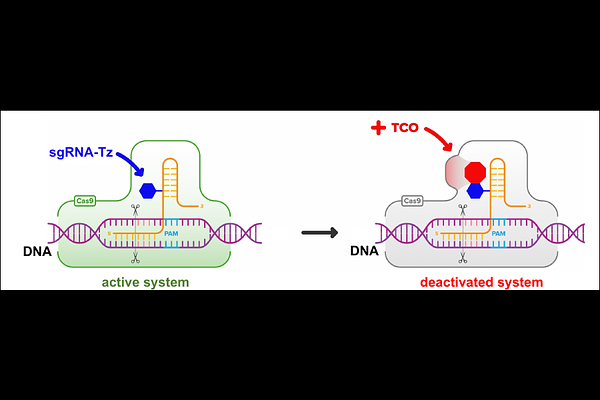Temporal Control of CRISPR-Cas9 Activity Using Bio-orthogonal Chemistry.

Temporal Control of CRISPR-Cas9 Activity Using Bio-orthogonal Chemistry.
Pandit, B.; Vangaveti, S.; Sentre, J. F.; Fuchs, G.; Royzen, M.
AbstractThe CRISPR-Cas9 system has become a widely used tool for genome engineering. Here we present a new method for small-molecule control of CRISPR-Cas9 using bio-orthogonal chemistry between tetrazine (Tz) and trans-cyclooctene (TCO). We carried out molecular modeling studies and identified a unique position on single guide RNA (sgRNA) that can be site-specifically tagged with Tz without disrupting its activity. We also synthesized a series of TCO-modified CRISPR suppressors. When exogenously added, they click to the Tz-tagged sgRNA, perturb the system and drastically reduce the nuclease activity. The most successful suppressor is a TCO-modified six amino acid long cell-penetrating peptide, which shows excellent cell permeability. We showed that our method to control CRISPR-Cas9 nuclease activity is general by applying it to three different sgRNAs. We also showed that our method works in solution, as well as live HEL293 cells. We utilized flow cytometry to demonstrate temporal control of CRISPR-Cas9 targeting GFP. Lastly, we showed the therapeutic potential of our method by targeting vascular endothelial growth factor A (VEGFA).